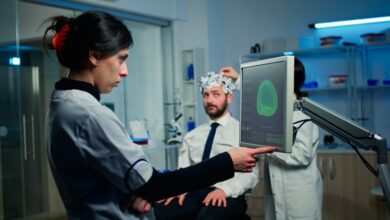Preventing Patient Misidentification with Advanced Face Verification

Patient misidentification is one of the significant issues in the healthcare system overall. This leads to severe consequences such as wrong medication and, most of the time, death. Research conducted by Johns Hopkins University in 2016 discovered that medical errors are the third leading cause of death in the country. There are more than 251,454 deaths are reported annually due to this, and patient misidentification is one of the primary reasons for it.
According to a nonprofit organization dedicated to patient safety, 7% to 13% of laboratory errors involve misidentification. This humongous number highlights adverse events, including incorrect treatments. Thus, face verification is crucial in verifying the patients and identifying them before starting the treatment. Facial recognition technology enhances the identification of patients and ensures that the healthcare sector adheres to Know Your Patients (KYP) regulations.
Key Insights of the Article
- Demystifying facial verification for understanding the technology
- Implementing face recognition systems in hospitals
- How can a face verification system prevent misidentification?
- KYP compliance online face verification for accurate verification
- Benefits of opting for face verification online
Demystifying Facial Verification
Face verification is a technological advancement that has the ability to detect and verify human facial trigonometry. It verifies the human face with an image, video, or the live scanner placed at the location. Advanced technology is developed using Python and machine learning, as well as its subset deep learning. Moreover, AI-driven advanced technology uses the framework of conventional neural networks (CNNs). This extracts and analyzes the distinct facial features from source images to verify the face accurately.
Artificial intelligence facial recognition technology has various applications across different industries, as it can be integrated into smartphones and facial recognition devices. Additionally, face verification allows users to access applications, systems, or services and functions similarly to a face scanner. For example, in healthcare settings, facial recognition can help avoid patient misidentification and combat fraudulent medical insurance claims.
Implementing Face Recognition System In The Hospitals
Establishing a facial recognition system can be an effective method for identifying patients since the scanners can be set up in various hospital surroundings. Patients can be confirmed by correlating their facial features with their government and hospital-issued identification, ensuring there is no possibility of misidentification. The face recognition system operates in the following manner:
- Data Collection: The system captures high-quality facial images of patients during the registration process and when they enter the hospital. It can also be done online for remote verification or if someone wants to save time and do it by themselves with their phones.
- Image Preprocessing: The captured or given image is then enhanced and standardized for consistent quality and accuracy, as well as for distinguishing the background from the face.
- Feature Extraction: The progressive AI identifies unique facial features using intelligent algorithms and conventional neural networks by extracting the features.
- Patient Authentication: Individuals visit the locations equipped with scanners to carry out self-scans that include capturing live facial images. These images are subsequently transmitted to the backend system for verification.
- Feature Matching: The scanner subsequently analyzes live images against the database utilizing the facial recognition model and the information it has saved during the patient’s registration process.
- Face Verification: It confirms a patient’s identity by comparing facial features with existing data and validating them with the professionals by delivering the final result.
How Face Verification System Can Prevent Misidentification?
Patient misidentification is a prevalent problem that can result in fatal outcomes. In the United States, a woman received chemotherapy intended for another patient who shared her name. Such significant errors can expose healthcare providers to substantial penalties and legal action.
Hospitals should adopt face verification systems to prevent such critical mistakes ensure correct identification, and protect lives. Hospitals can improve patient safety by utilizing cutting-edge technology and guaranteeing accurate identification throughout the healthcare journey.
KYP Compliance Online Face Verification For Accurate Verification
The Know Your Patient (KYP) is known as the subsequent of the Know Your Customer (KYC). This is specific to medical terms where the hospital must perform an identification process on the patient to verify them. Therefore, online face verification provides the hospital with a powerful authenticating solution to have regulatory compliance within the organization and its operations.
The robust face recognition solution, equipped with liveness detection, is considered to be the most accurate and optimal for patient identification. Patients may have the same names but cannot have the same faces. Implementing liveness detection ensures that the system can accurately verify the presence of a real person, helping hospitals keep precise records of patients’ facial data. This allows for accurate identification, especially crucial when patients undergo severe treatments like chemotherapies and surgeries.
Benefits of Opting for Face Verification Online in Healthcare
Face verification online in healthcare offers a secure and efficient way to verify patient identities, reducing the risk of misidentification and enhancing overall safety. Here are the key benefits of face verification in healthcare settings:
- Enhanced Patient Safety: Reduces misidentification risks, ensuring accurate medical records and minimizing potential treatment errors.
- Streamlined Check-In Process: Speeds up patient registration, providing a quicker, more efficient experience.
- Supports Telehealth: Secures virtual appointments, allowing remote healthcare with verified identities.
- Regulatory Compliance: Assists healthcare providers in meeting compliance standards for patient data protection.
- Increased Operational Efficiency: Reduces administrative tasks associated with identity verification, saving time and resources.
- Improved Patient Experience: Offers a seamless and personalized experience, whether visiting a facility or accessing telehealth services.
Wrapping it Up
The integration of face verification represents a considerable advancement in healthcare technology by addressing the critical issue of patient misidentification. This employs AI algorithms that allow hospitals to reduce errors associated with mistaken identity significantly. It also boosts patient safety and improves clinical results. This technology ensures compliance with Know Your Patients (KYP) regulations and mitigates the risk of litigation by improving overall operational efficiency.



